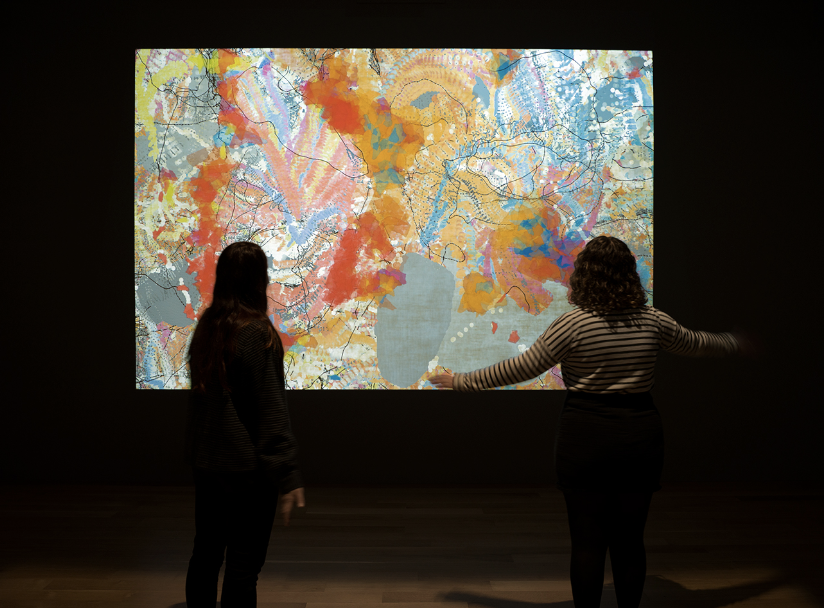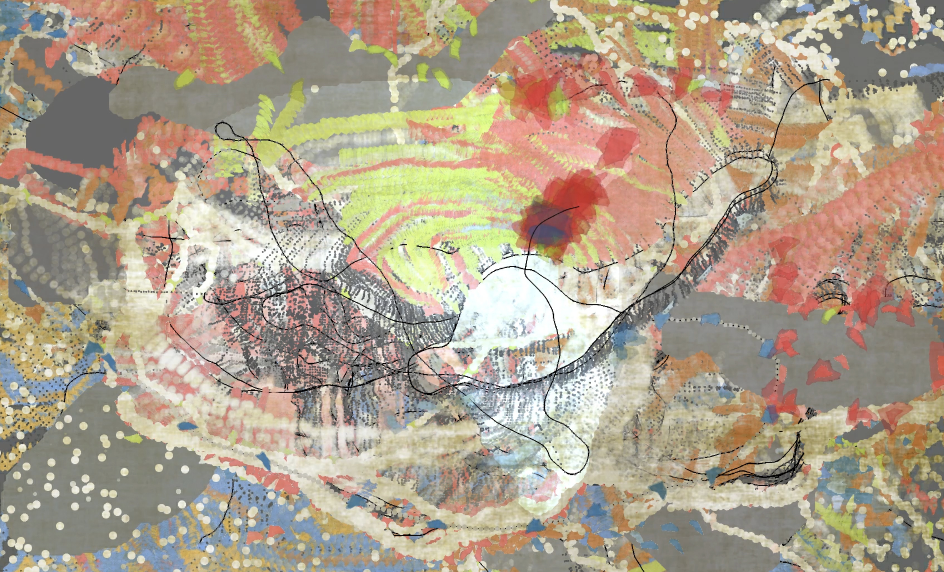Camille Utterback is an internationally acclaimed artist and pioneer in the field of digital interactive art. She explains her work as “an attempt to bridge the conceptual and the corporeal.” Represented by Haines Gallery in San Francisco, she is currently an Assistant Professor of Art Practice at Stanford University. She went to Williams College for a BA in Art and achieved a Master’s degree in Interactive Telecommunications at NYU’s Tisch School of the Arts. In May of 2018, she created Precarious for the National Portrait Gallery exhibition called Black Out: Silhouettes Then and Now. It was an interactive installation tracing human silhouettes with an algorithmic apparatus on a backlit screen.
Using contemporary digital tools, it actively traced the audiences’ figures continuously. Through custom coded interactive drawing systems, she built an algorithmically generated visual language she had been working on for many years. The points of the silhouettes exert a force on others creating this ongoing momentum to keep redrawing outlines and forming bodies together into one shared space. Through this piece of art, Utterback tries to redefine the aspect of personal boundaries as her audience is able to explore what happens when these barriers are broken creating a more open and welcoming atmosphere.
She believes ur bodies portray abstract symbolic systems and how functions like communication and language echo our physical self. Forming the relationship with interfaces and representational systems of our machines, Utterback uses interactive and computational mediums to depict different aspects of ourselves in her works of art.


![[OLD FALL 2019] 15-104 • Introduction to Computing for Creative Practice](wp-content/uploads/2020/08/stop-banner.png)